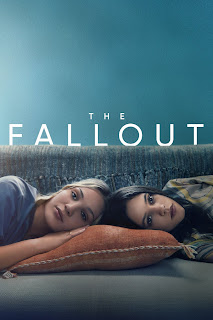Genre Research: Scientific Fiction
There are many things that make a genre clear to what it is. For example, the genre Science Fiction has usually always has these factors to it.
Camera Angles:
- Medium shot: This shot is often used to show at least two or more people/creatures. It shows their faces in good detail and allows viewers to see the emotions the characters are feeling.
- Close up: This angle allows the audience to connect with the character. It is more intense than a medium shot, often capturing only one whole character in frame.
- Extreme close up (aka reaction shot): This shot is perfect for very intense emotions. It shows us tiny details that viewers wouldn't have previously seen, and draws attention to what the director pleases.
Costumes:
Costumes in this genre often depend on the role the character is playing. If they are a creature like an alien, or animal we have never seen before, they usually have bright colors or strange attributes. These can include a lot of hair or a strange voice. Other characters can be dressed in armor, or clothing that is odd enough to not be seen on earth.
Lighting:
Sci-Fi movies usually contain a broader range of light than any other genre. They often use a dim lighting, casting shadows and adding an element of mystery to unknown sets. The thing that sets this genres lighting apart from others though, is the use of colored lighting. Often Sci-Fi uses colored lighting for any number of reasons. Most often, it is used to illustrate good and evil. The different lighting cast on each character in different scenes can tell the audience a lot about them, and their intentions.
Makeup:
Makeup in Sci-Fi movies can be anything from eyeliner, to completely reconstructing an actors face with SFX makeup. It can make a person into a monster or alien, or it can gently accentuate the main characters features. There is no end to the possibilities in these movies.
Props:
Props can different from movie to movie, usually there are weapons, different foods, certain buildings or vehicles and even telephones/radios.
Setting:
Usually Sci-Fi movies are set in fictional places, like made up planets or universes. If they are set on Earth, then it is traditionally in a big city with high populations.
Editing:
Fast Cutting: These cuts in between different scene can affect the venires mood, creating an intense feeling, and usually suspense.
Fast motion: Speeding up things in the film, usually to an impossible speed, creates an even more fictional feel to the film, allowing it to really transport the viewers.
Flashbacks: These usually provide a backstory for characters that we hadn't previously known. It can reveal how they got to where they are now or even hidden details that weren't obvious before.
Sound:
Sci-Fi movies can use any range of sound to achieve the affect they are looking for. All of these techniques are used to audibly aide the viewer while they watch the film.
Non-Diegetic: Often directors use any range of sound affects they can to translate what viewers see into sound. The most popular sound used in sci-fi movies is the use of the electronic musical instrument called a theremin. This allowed directors to create a new feeling in the audience, with sounds they had never heard before.
Diegetic sound: Used to add to a tone in a scene. Sounds the actors make, like breathing, crying, or even their dialogue.
Unappealing portions of Sci-Fi:
Effects: These movies need a huge range of special effects, many of them we do not have the ability to create with our resources. It would make editing much more difficult.
Makeup: We do not have the skills or resources to make anyone look anything other than human, this is a lacking component for us.
Appealing portions of Sci-Fi:
Lighting: The range of lighting is something we have the resources to achieve and do well with. Using different colors and ranges of brightness is something we could do well with.
Acting: We don't need too many characters, so we can achieve it with out group. It is also not very complicated to act as the characters, so it is something we shouldn't fine problems with.




Comments
Post a Comment